Cerebrum | Interview | Javier Esteve | “Underground Heavy Psych from Spain”
Cerebrum is the holy grail of the Spanish underground counterculture scene.
The band originally released only two progressive singles, but they recorded much more which eventually was issued a few years ago. A group that’s a must for all fans of heavy psych / experimental rock.
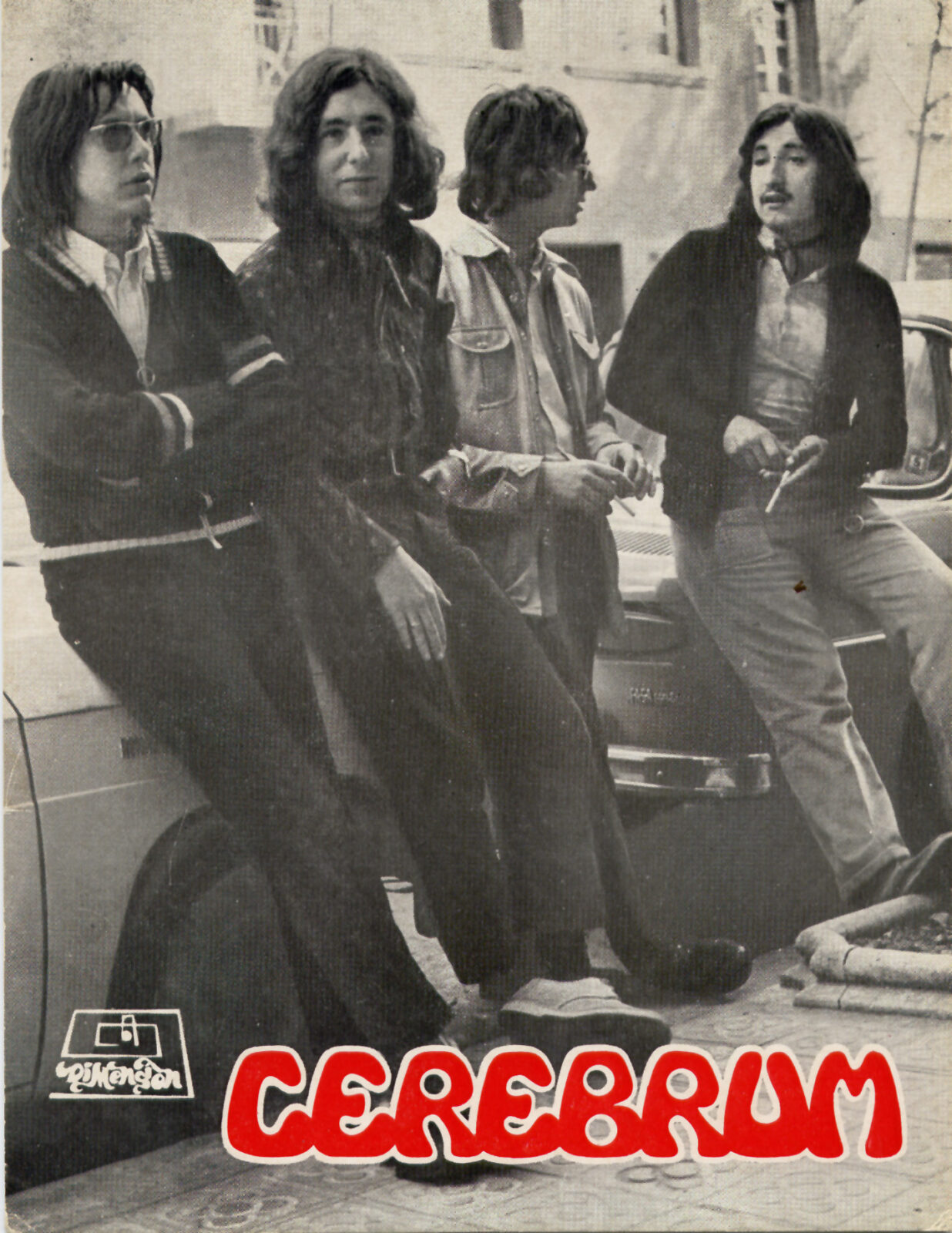
“We had absolute freedom in the studio to experiment”
You were born in Barcelona, but soon moved to Madrid. What it was like to grow up in Madrid?
Javier Esteve: Well, it was undoubtedly a very special time for me, it was also a special time at an international level, in which many things happened, all of this was a little more complicated in Spain due to the political and social situation that existed. I grew up in the middle of an urban culture of a big city that “collided” with the established system, and obviously that included all the artistic-cultural manifestations. In general, this is how I spent my adolescence and youth.
Spain was going through a lot of changes around that time. Did that have any impact on you?
Of course, it had an impact on me and on most Spanish citizens; in the good and in the bad. It was practically impossible not to be affected by the circumstances of the country.
Did flamenco players have any influence on you when you were starting with the guitar? How about today?
No, not really. “Authentic” flamenco at that time was not widely lavished in general, nor in the media; it was somewhat “underground” music, although commercial substitutes for flamenco were heard on radio and TV. In my beginnings, it did not influence me much because in my house that style of music was not listened to; my parents were “sons of the swing era”. Keep in mind that flamenco basically comes from the region of Andalusia, Spain and is organized into 17 regions and 2 autonomous cities, each with its own folklore, and there are some of them that do not feel identified with flamenco, although in general they do respect it. Possibly today, despite the fact that I have shared the stage with many flamenco artists, I am more influenced by blues, blues rock, fusion, et cetera without losing sight of some experimental vision of music, all this does not prevents Paco de Lucia from appearing to me as one of the best and most creative guitarists there has ever been, he modernized flamenco in an obvious way.
“One of the bands that struck me the most when I first heard it was King Crimson”
Was it difficult to get records from the UK and USA in the beginning and what were some singles and albums that stood out to you?
Not in my case or that of my friends, since we were worried about knowing what music was published, both in Spain and abroad. However, in Spain most of the international pop and rock albums were published, although with a certain delay, and sometimes changing the album covers in a somewhat puerile way (because naked women appeared, as happened with ‘Electric Ladyland’ by Jimi Hendrix Experience). That was censored thanks to our government. At the beginning from a very young age I liked American R&B and soul music, as far as British bands go, my favorites were The Animals and The Kinks. Anyway in the 60s and 70s I liked many things, like The Doors, The Who, Beatles, Manfred Mann, Zappa, Canned Heat, Lovin’ Spoonful, Electric Prunes, Blue Cheer, Hendrix, Clapton, Steppenwolf, Soft Machine, Steely Dan, Zeppelin and so on. I’ve always been quite eclectic with the music I’ve listened to. One of the bands that struck me the most when I first heard it was King Crimson, without a doubt.
What kind of material did you play with some of the early groups you formed? There were Rit-Son, Surcos, Conexion and Frambuesa. Who were other members of these early groups you were part of?
Rit-Son was a quintet and my first musical group. It was a group formed at school with fellow students when I was a teenager (15 years old). We used to do versions of The Animals, The Rolling Stones, et cetera.
Surcos was the first “serious” semi-professional group, they paid us to play, we did a bit of R&B, pop rock, rock ‘n’ roll, and some of our own songs. We were a quintet that dissolved when we couldn’t pay for the equipment we were playing with. The instrument store where we had bought it seized it, the drummer (Angel Berral) and the bassist (Fernando Caballero) continued professionally in music, the other guitarist (Luis Balduque “Wilson”) ended up working in the sports world of radio, and the singer (Pablo Abraira) ended up being a famous singer of melodic-commercial music with great success in the 70s. Mermelada/Conexión (“Mermelada” was the original name of the group, that was later changed to “Conexión”), we made music inspired by R&B and gospel. A repertoire of their own music inspired by R&B and gospel, one of its members (Luis Cobos) who played the tenor sax, has been for years the president of a national and international association (AIE) that collects musical rights for the interpretation and the performance of the musicians in the recordings of the discs and the videos that are published.
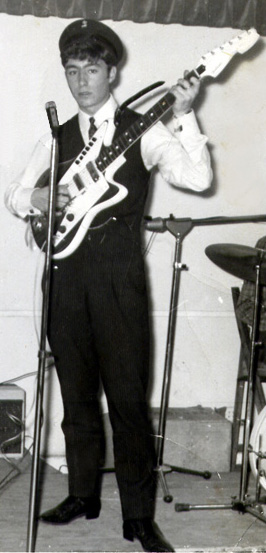
Frambuesa was another group that I set up with the singer of Surcos. I had in mind to set up a small group that would make avant-garde music, something experimental, but Pablo, the singer, ended up convincing me to set up another R&B group, because he still had not had that experience, so we ended up being 7 musicians again, but the group did not last long. Our drummer (Angel Berral), who had also been part of Surcos died in a car accident, a circumstance that decided me to leave the group to try to launch the project that I had in mind from the beginning. I was convinced that music was taking new paths, that musicians were beginning to experiment, and I wanted to be part of that in some way.
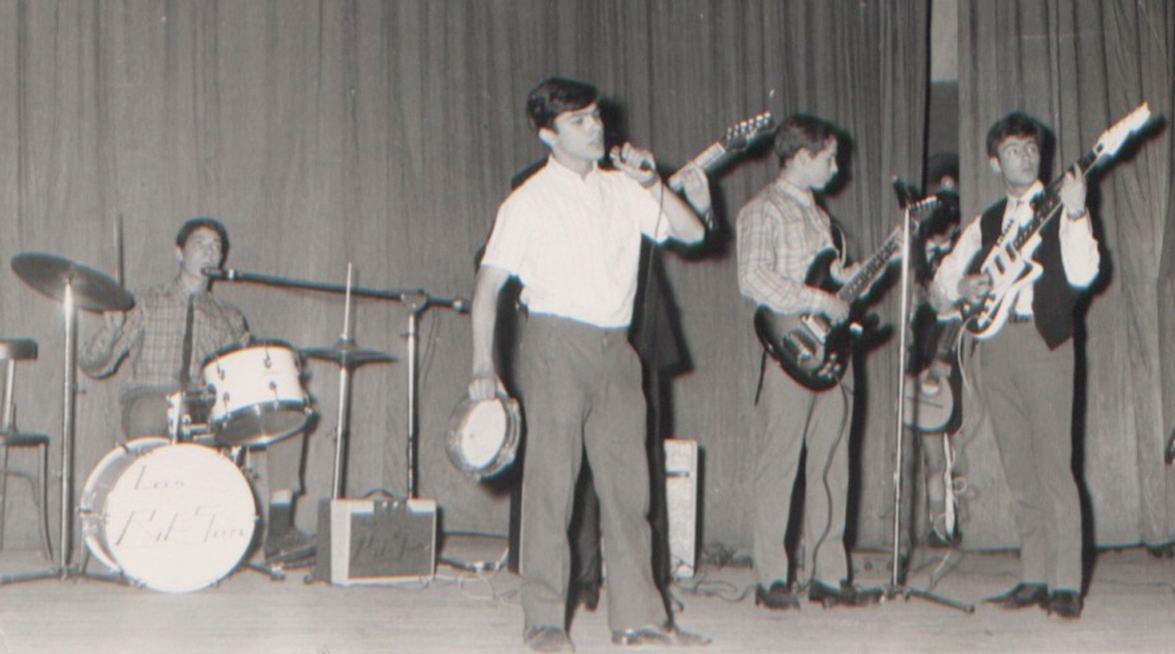
Can you elaborate on the formation of Mas which eventually became Cerebrum.
Mas was originally a quintet; Fernando Artalejo (drums), Chema Pellico (bass), Jose Maria de Inés “Perry” (keyboards), Luis Navarro (vocals and harmonica), and me on guitar. Fernando had to comply with the mandatory military service at that time, so shortly before recording our first album he was replaced by Pedro Moreno on drums. Perry the keyboard player did not want to sign the contract with the record company (he did not want to assume any commitment) and he left the group for that reason, with which we definitely became a quartet; drums, bass, guitar and voice. With that formation and with the new name of “Cerebrum” we recorded our material.
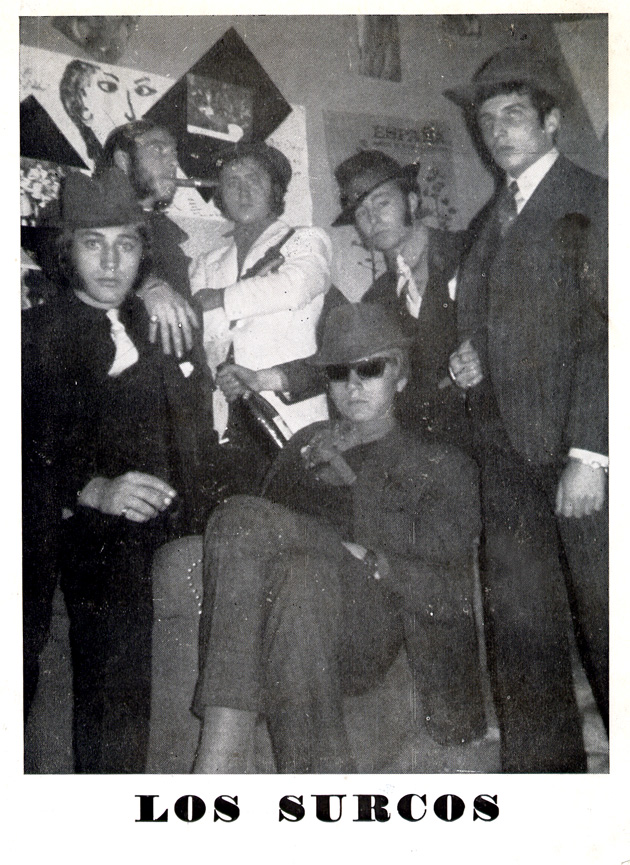
Where did you get your first audio equipment and where did you play? What kind of material did you play early on?
Actually my first real equipment at the age of 14 was an old tube radio set that my parents kept and that was out of use. I used to plug my first guitar into it, a Höfner that was made in Spain, which was a very bad instrument and the cheapest in the stores.
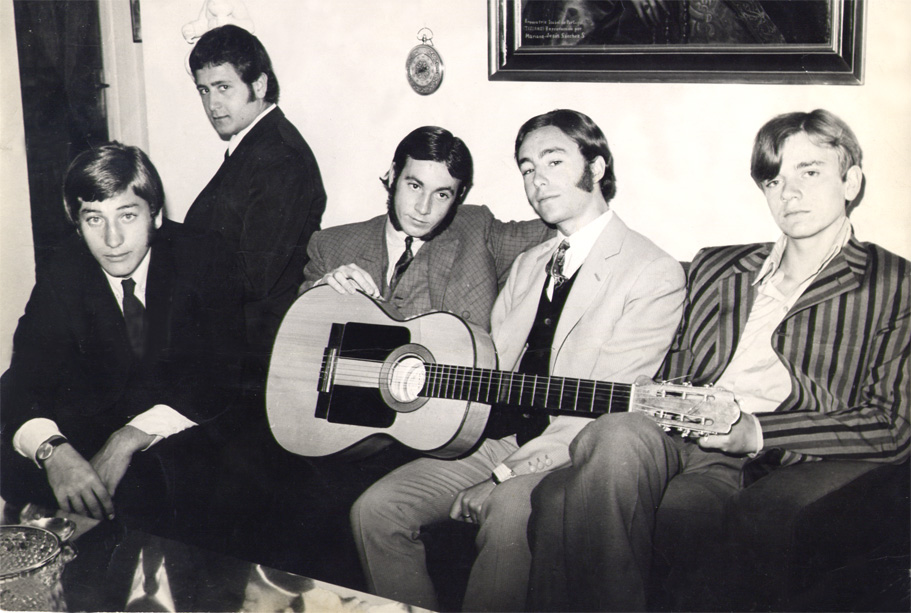
When I started I played by myself at home. I mostly played instrumental songs or at least I tried to. Songs by The Shadows and things like that.
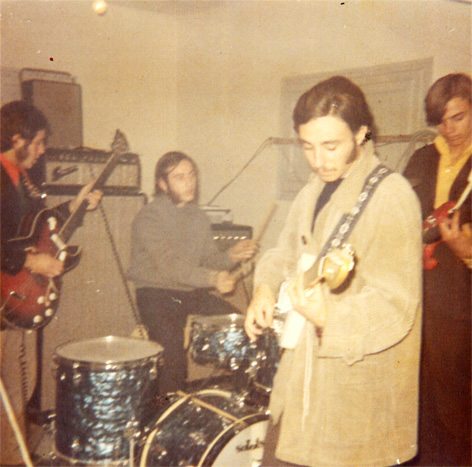
What was the first original you played?
The first original song I played was with the group Surcos. It was a song composed by the singer Pablo Abraira entitled ‘Es posible’. Later came the Cerebrum stuff of which I was a co-author on many of them.
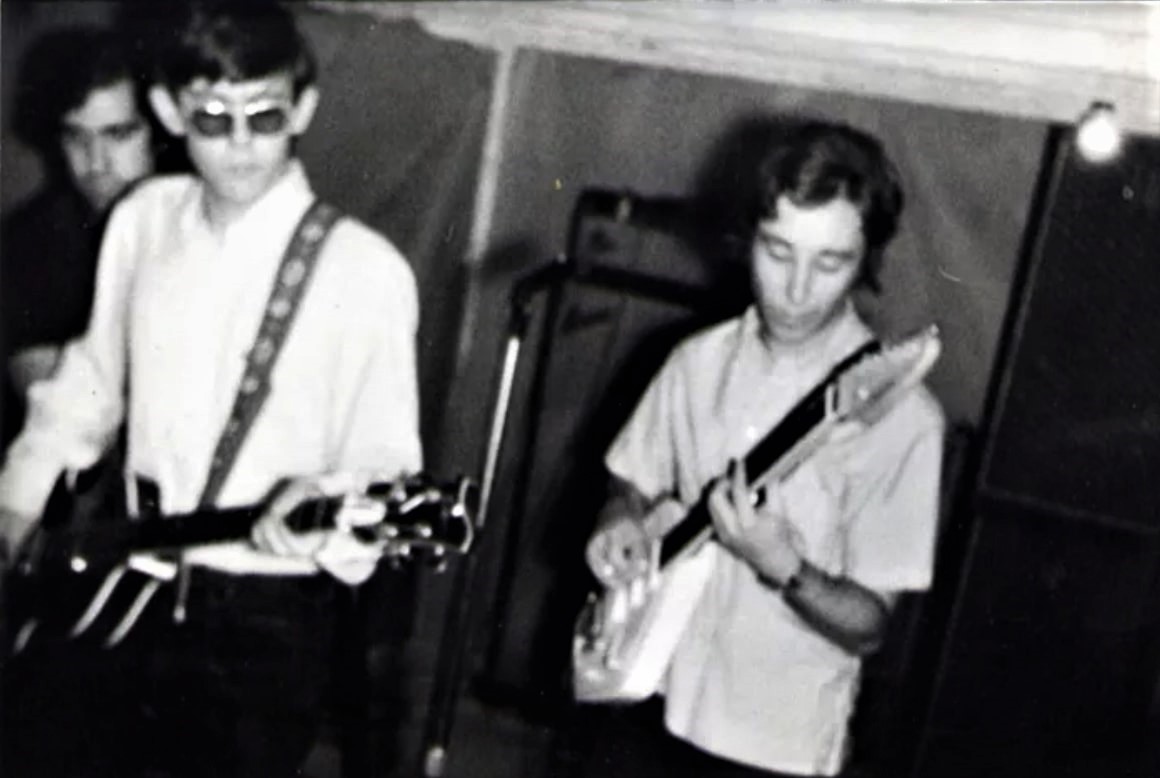
Can you chronologically share how the lineup change followed?
Regarding the formation of Cerebrum, I have already explained in another question the changes that took place in the group, if you are referring to the chronological succession of the groups, since listing all the musicians would be endless, it has been the following: Rit-Son, Surcos, Mermelada/Conexion, Frambuesa, Mas (although at first we did some performance under the name Cultivos Hidropónicos), Cerebrum, Rigor Mortis, Araxes, Araxes II, Carmen, ETC, Crisis, Metrópoli, Delirium, Delirium Blues Fusion. The groups Rigor Mortis, Carmen y Crisis were projects that did not last long and did not come to fruition for various reasons.
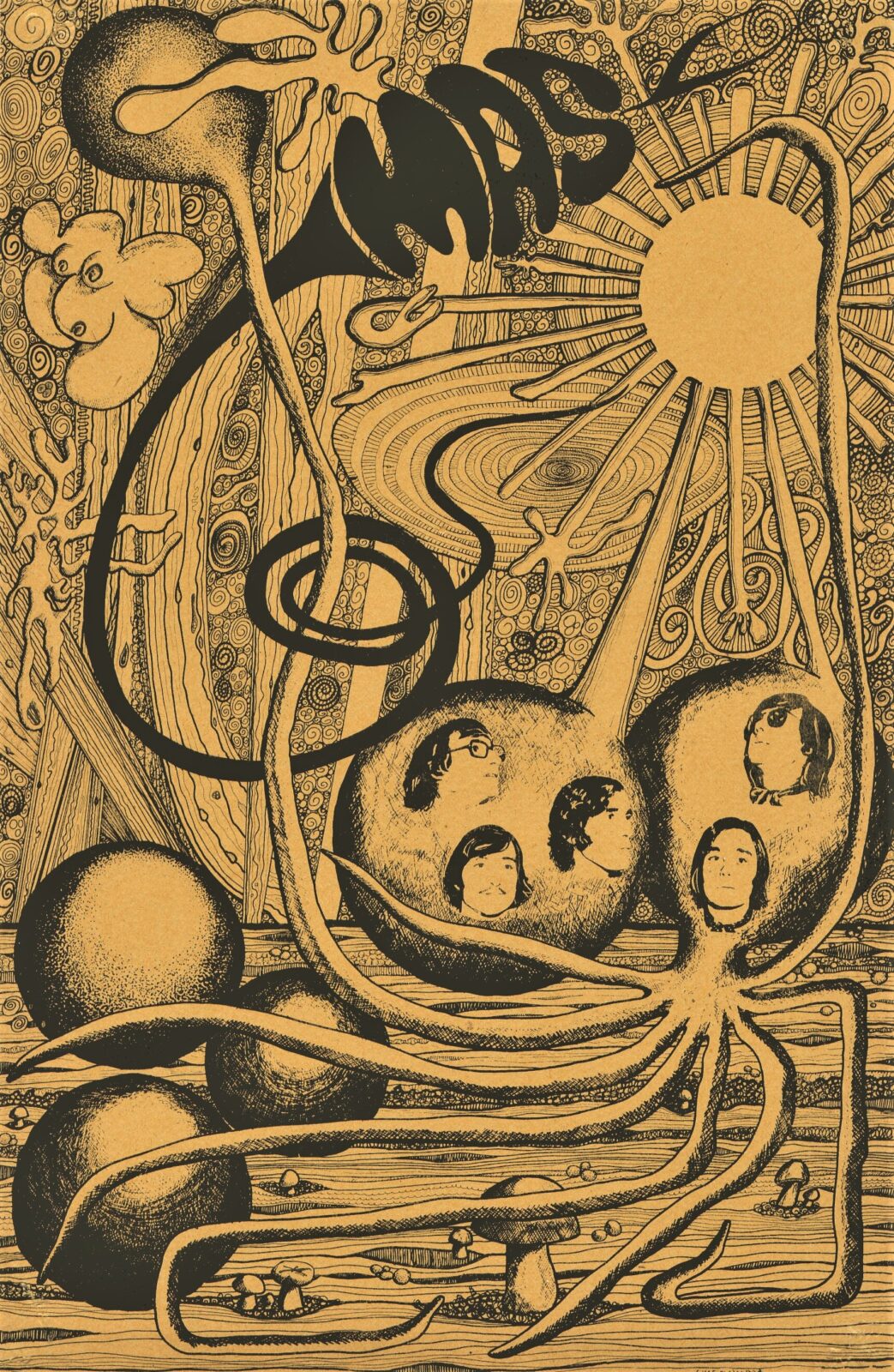
What kind of places did Mas play and what was the typical repertoire for the band?
Mas played in the music clubs that proliferated in Madrid and its surroundings at that time, rock ‘n’ roll and pop clubs normally. The band’s repertoire consisted of covers of Canned Heat, Grateful Dead, Iron Butterfly, Small Faces, Spencer Davies, et cetera and some of our songs.
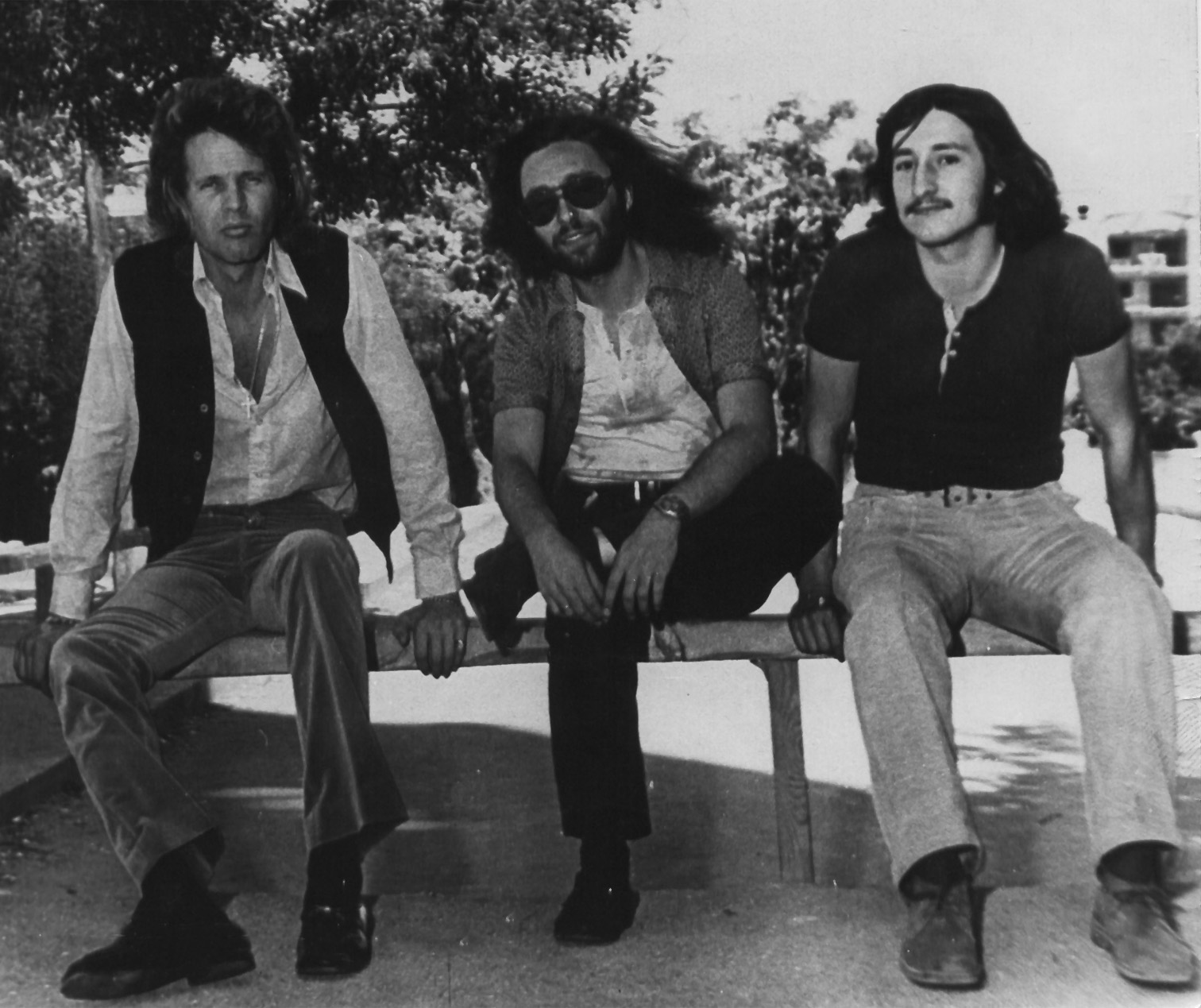
“We exaggerated with the volume”
I bet you were very loud? What were some other groups that you shared stages with?
Well, we exaggerated with the volume. In the 60s there were practically no festivals where several groups coincided, although I don’t think I’m capable of remembering all the groups and musicians with whom I’ve shared the stage. We’re talking about many, many years, although I do remember that with Mermelada/Conexion I shared the stage with Los Canarios many times, with Cerebrum with Miguel Rios (famous Spanish rock singer), and with several Spanish rock groups, already at the time of big festivals with Araxes I practically played with all the Spanish rock groups and artists known from the 70s as well as Baron Rojo, Asfalto, Leño, Imán, Camarón de la Isla, Paco de Lucia, José Menese, Dr. Feelgood, The Wilko Johnson Band, and a long et cetera, with the group ETC we were supporting Tina Turner on her first tour of Spain, with Delirium, and as I remember right now, I’ve shared the stage with Mick Taylor among many others.
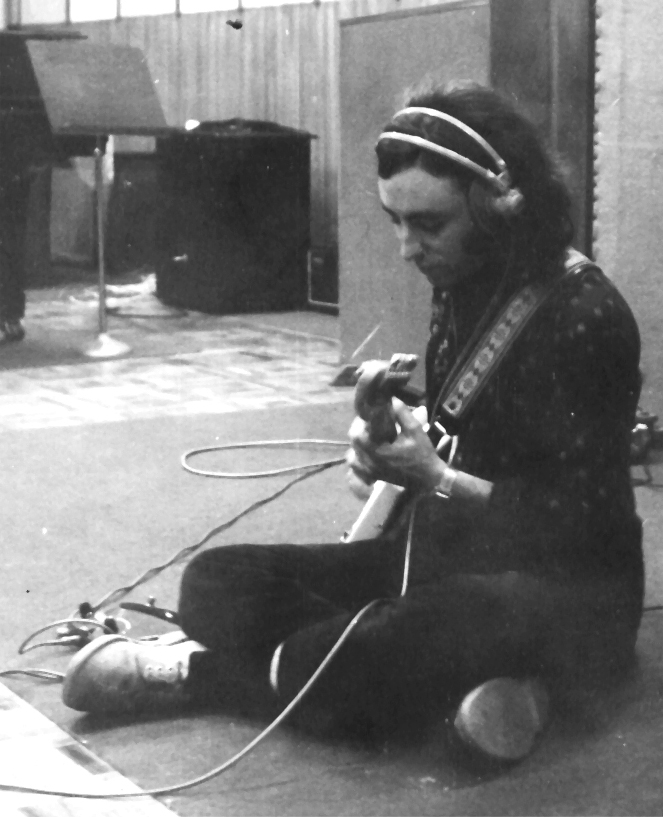
How did Dimensión get in touch with you?
A well known DJ of the National Radio of Spain named Jose Maria Mantilla showed a demo that we had recorded to an executive of the record company, also had something to do with the artistic director of the editorial Chappell International (Warner) named Chevi Semprini who liked our work.
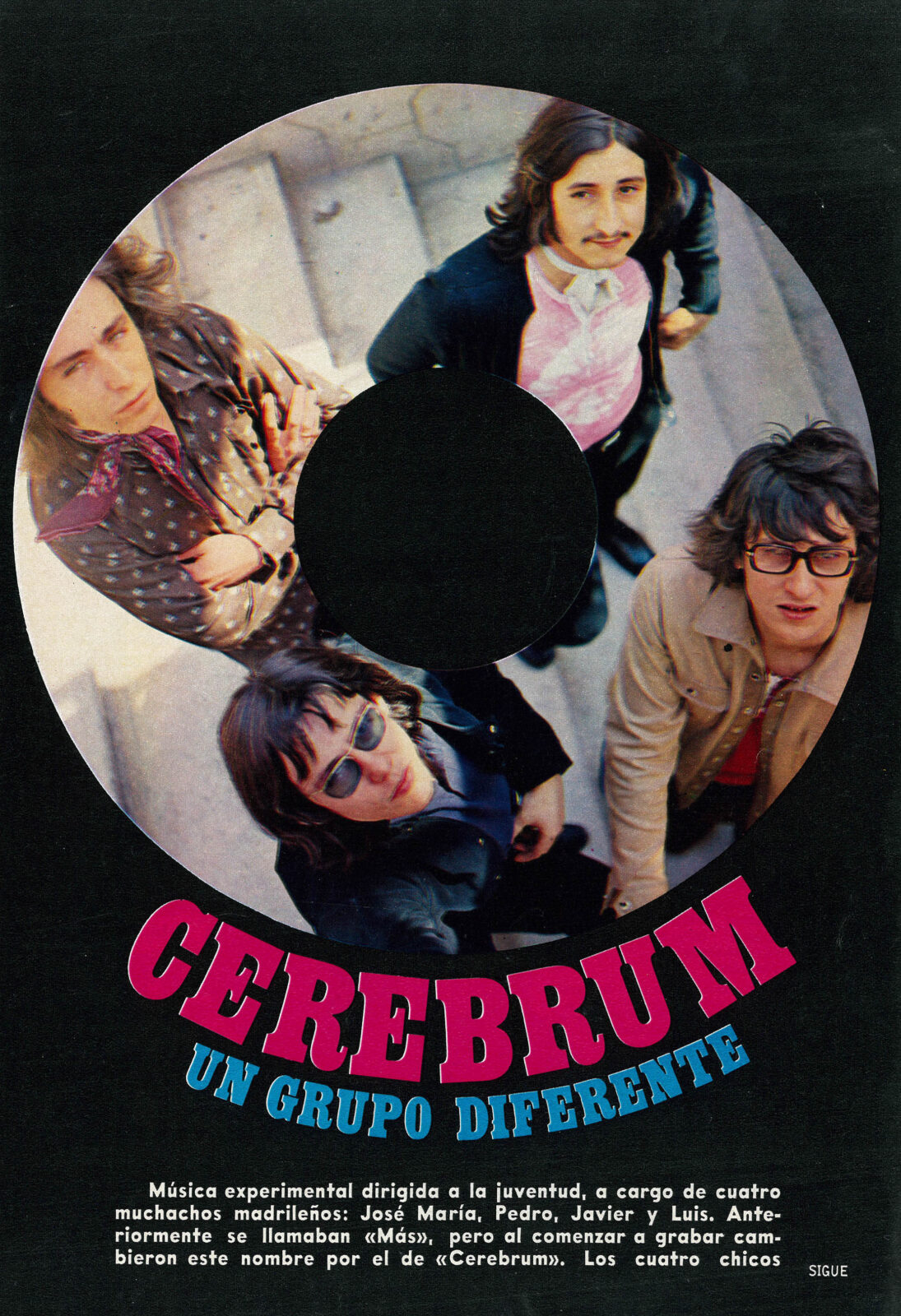
You were one of the heaviest if not the heaviest group around. It probably wasn’t easy for longhaired freaks to make a proper contract deal?
Indeed, the signing of the contract was a bit complex, in reality we had two offers; one from the Movieplay company from Madrid, which even offered us money to buy equipment, and another from Dimension/Ekipo from Barcelona. Even at the last moment there was some discussion with the formation of the group, the company suggested the incorporation of another musician, to which I personally refused, in addition to the resignation of signing the keyboard player.
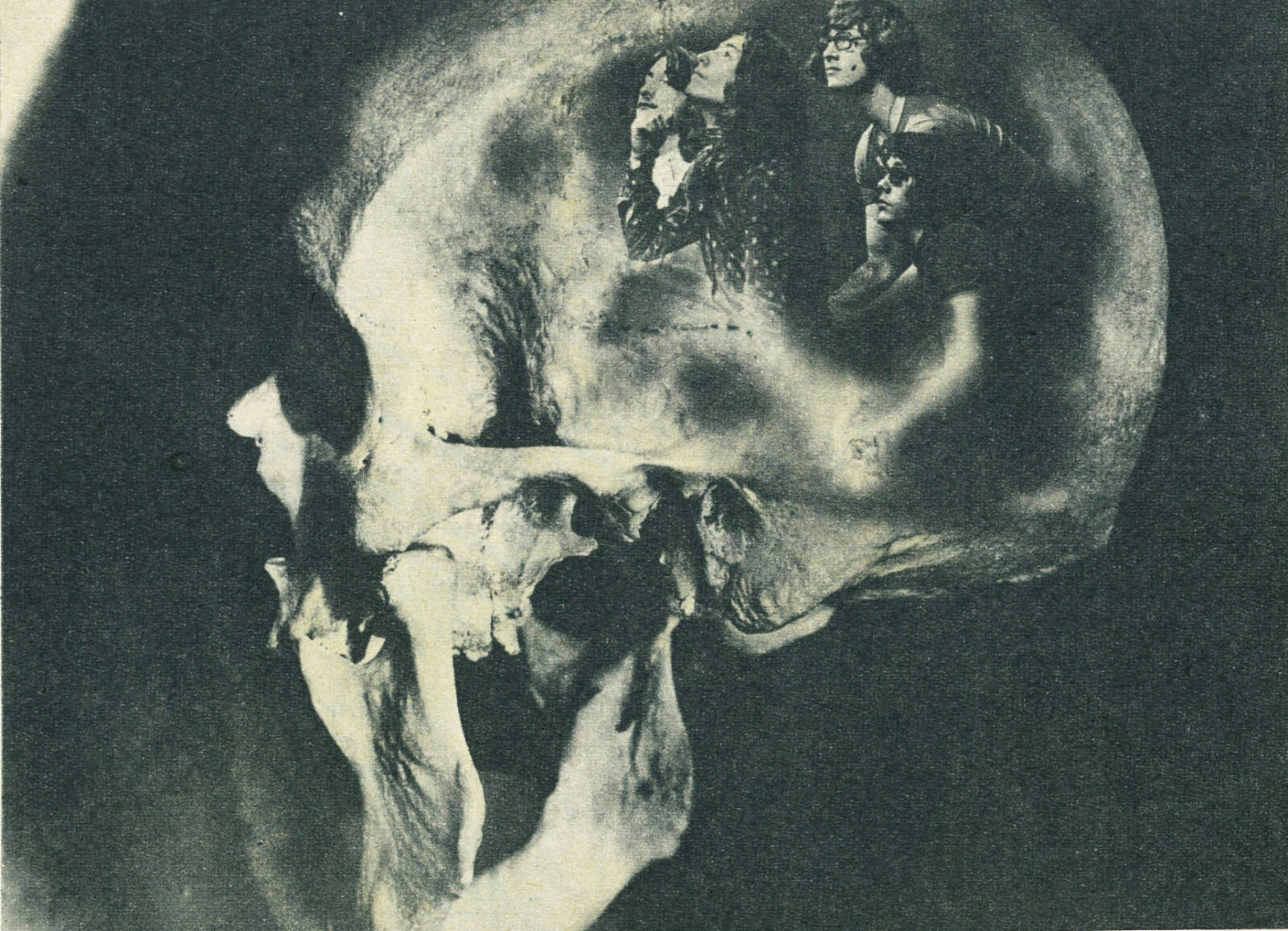
What do you recall from recording the two singles that were issued in your time?
The recording was a good experience since we had agreed with the company the absolute freedom to record, which gave us the opportunity to experiment in the studio; dubbing of guitar tracks with different solos, treatment of the voice through a Leslie Hammond, et cetera. It was a pleasure to experiment and at least for me personally, I had the satisfaction of having done something different, something personal.
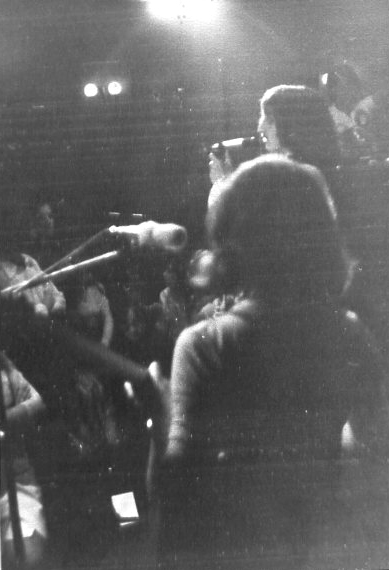
Shadoks issued a whole album of material with a longer version of ‘Eagle Death’. Was there originally intention to release an album back then in 1970 or were these just recordings you did in the studio without any guarantee Dimension would release it?
At that time it was quite usual to record a single first, and if it worked, then an album was recorded. That was something that was taken for granted.
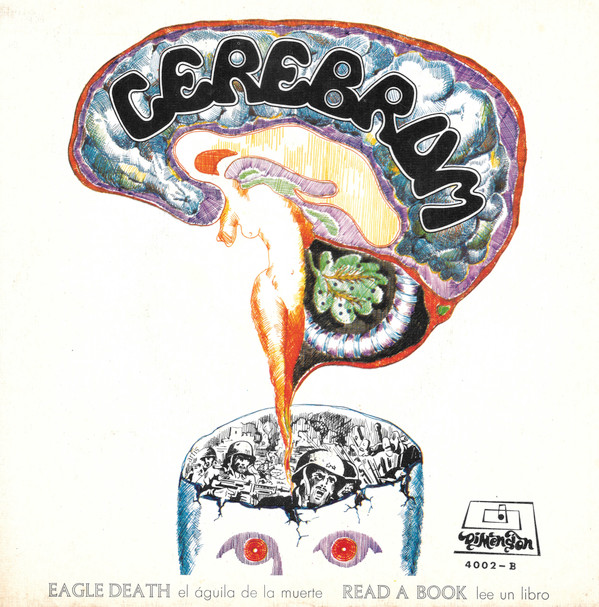
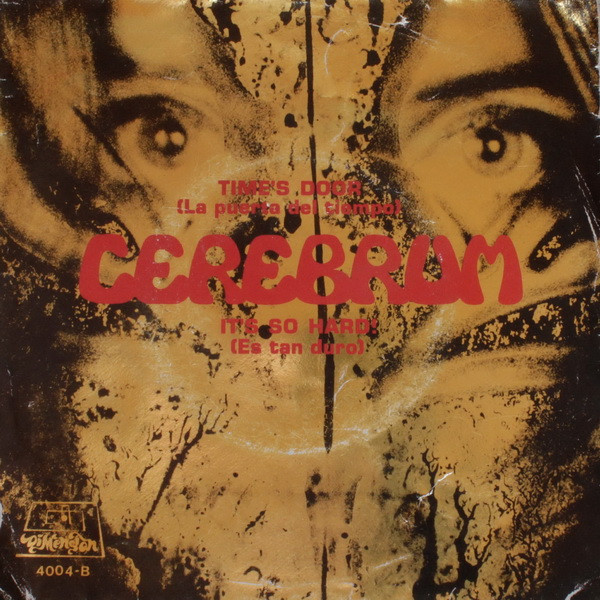
In fact, there is a song on the Shadoks album: ‘Seven Days’ that was prepared to be part of the next release. In the case of Cerebrum, the progressive disintegration of the group after my departure invalidated the option of making more recordings, and the company opted to request a release letter from us to cancel the contract.
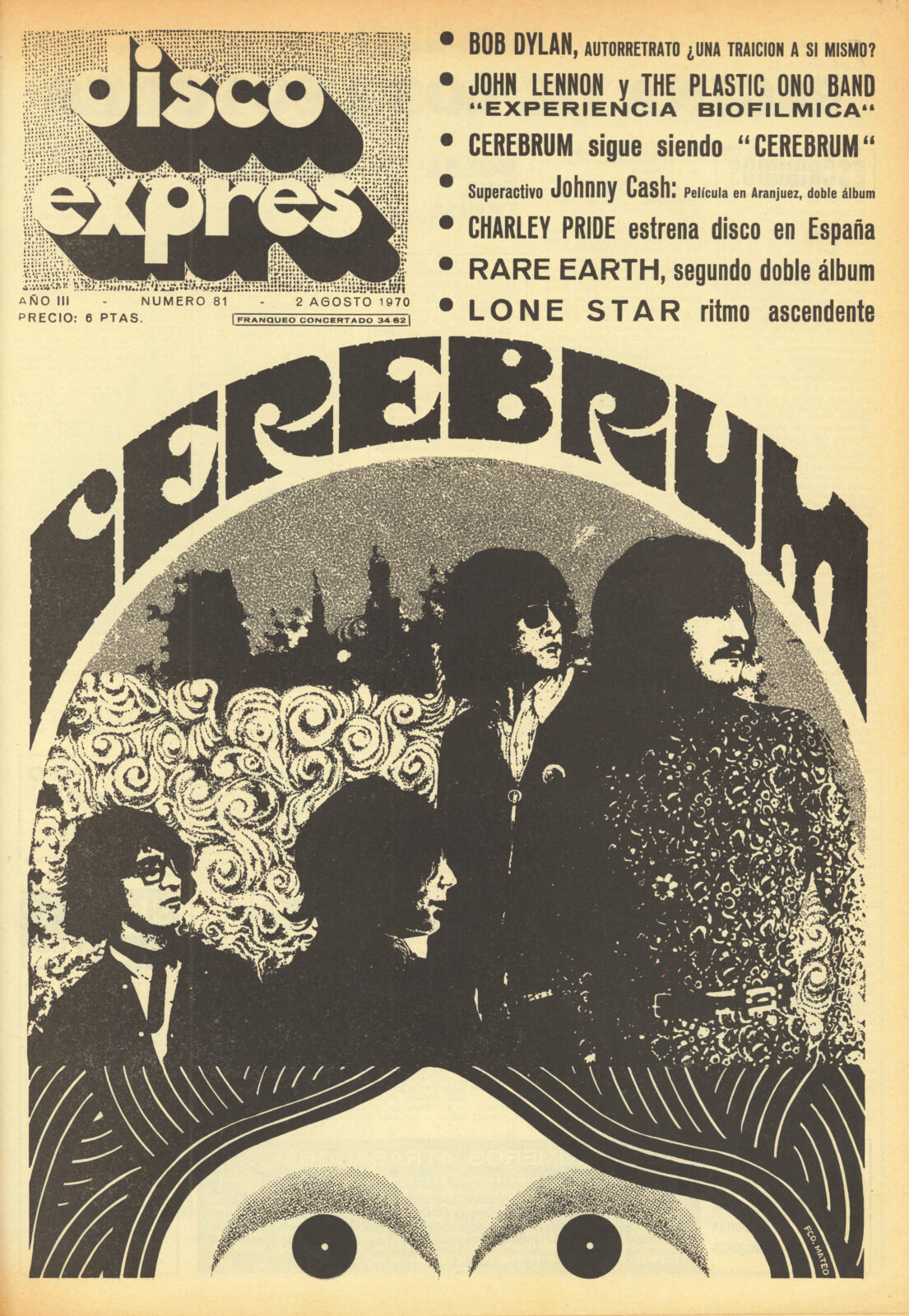
Would you share your insight on the tracks that are featured on Shadoks archive release?
In reality, I never really agreed with the content of that Shadoks album, because it brought together the Cerebrum songs with versions that we did in the early days of Mas, and from Mas to Cerebrum the group had evolved and had acquired a way of doing completely different stuff. In addition, the songs recorded by Mas were a demo with a recording quality completely inferior to the Cerebrum material.
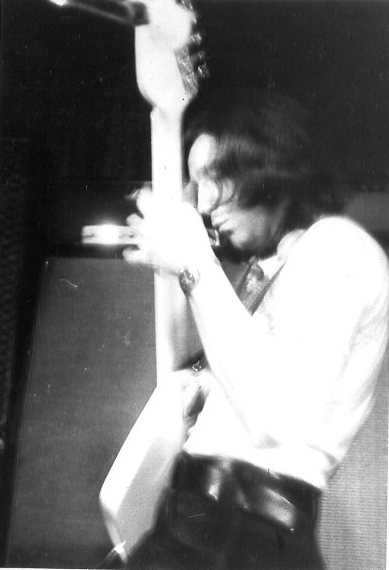
What was the weirdest gig you ever played?
Well, it’s a difficult question to answer, I don’t know if it would be better to ask: what concert wasn’t weird?
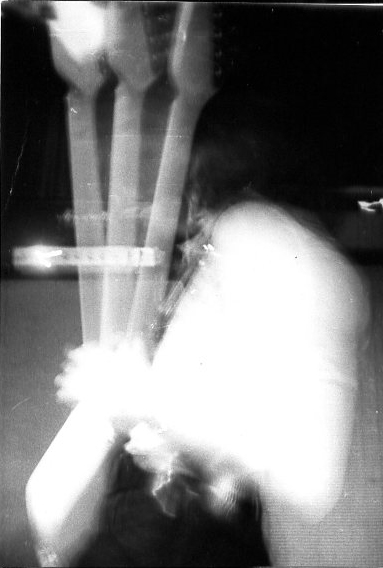
After Cerebrum you moved on to many different projects. What’s the story behind Araxes and Araxes II?
Araxes and Araxes II were fusion and experimentation projects. The question was to bring together rock, jazz, electronica, some flamenco rhythms, and anything else, so that instead of being a meaningless amalgamation of styles, achieve something concrete and different.
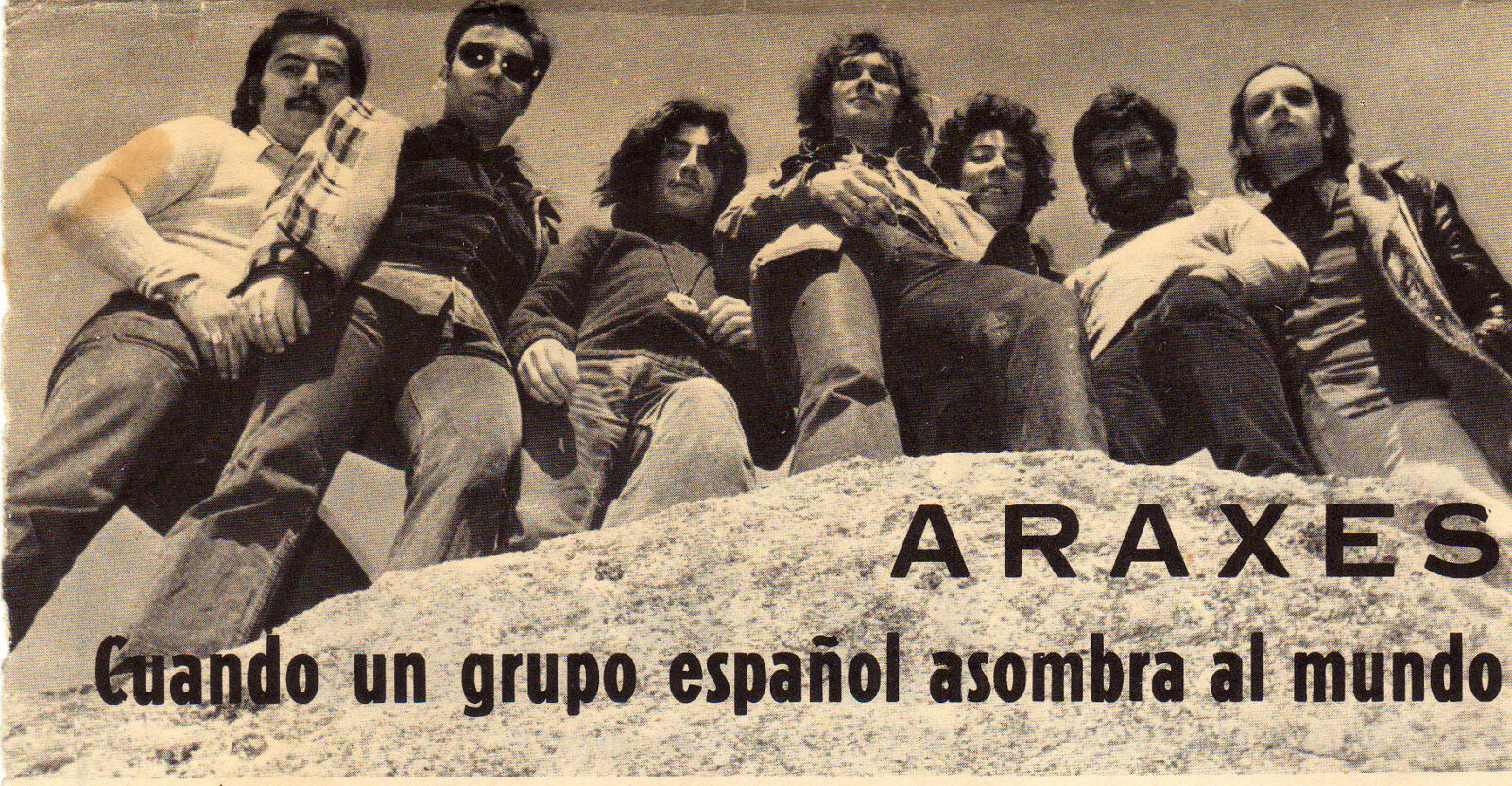
So in Araxes and Araxes II there were rock, jazz, electronic musicians, et cetera playing all together.
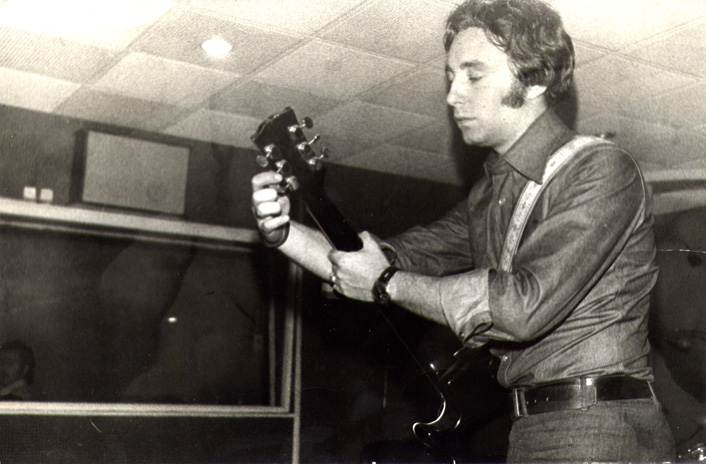
Performances were enhanced with pre-recorded sound effects on tapes, makeup, staging and image were used on many occasions. I think that in the end it was achieved; nobody did what we did. We were septet and octet formations, through which many musicians passed, and in which there were drums, bass, electric guitar, acoustic guitar, flute/sax, electric violin, electronic and synthesized effects, oboe, organ and synthesizers, percussion, and even two solo singers.
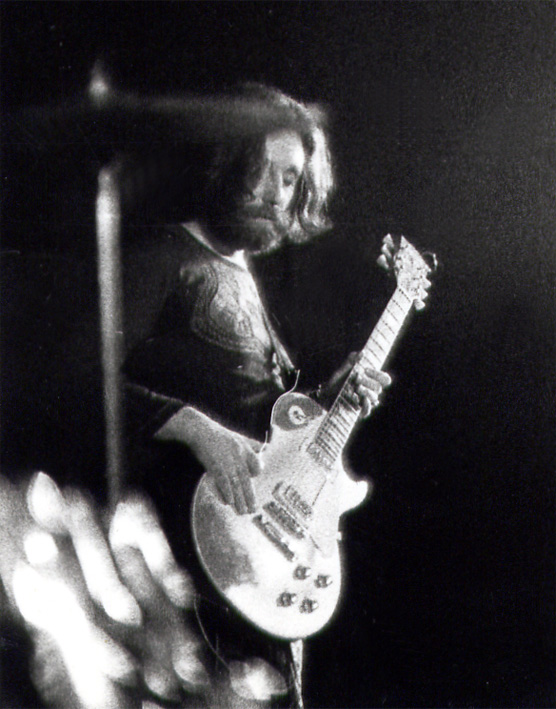
First we released a single with a small company that ended up disappearing, GMA.
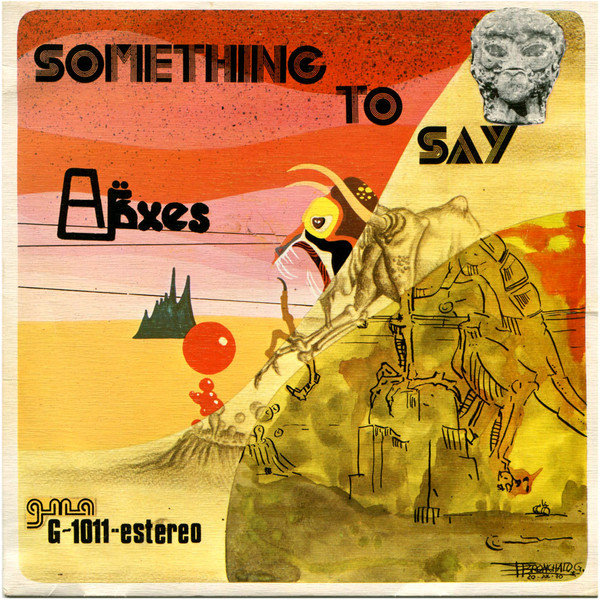
With Araxes II an LP was going to be released, but the tremendous discussions about the contract and the royalties of the recordings with the Chapa Records/Zafiro company ruined the project in the middle of the recording, only two songs were published in a compilation album of the company, it was a real shame, above all because of the enormous work, the fruit of several years, that we had developed. A lot of topics were left without seeing the light.
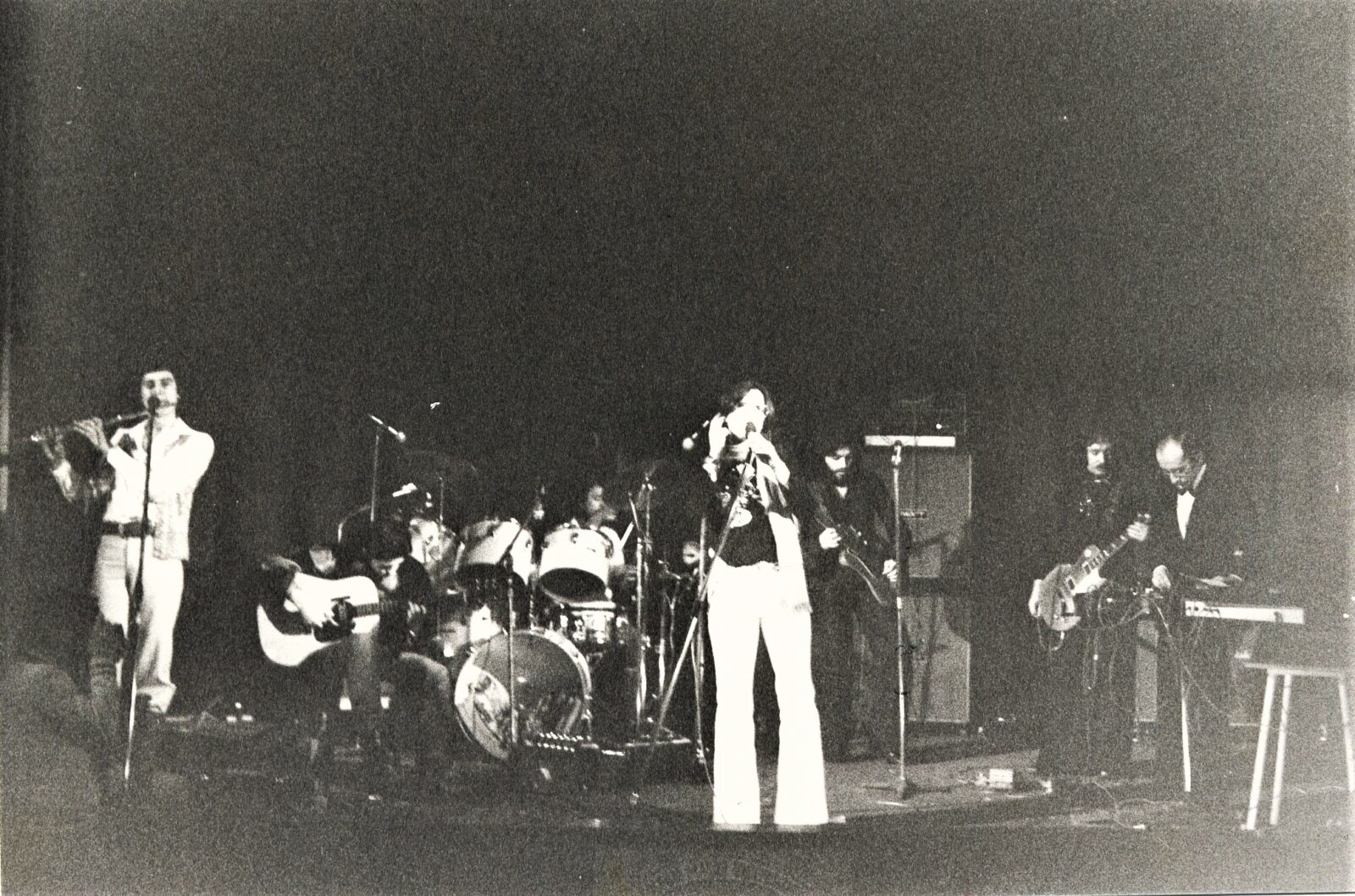
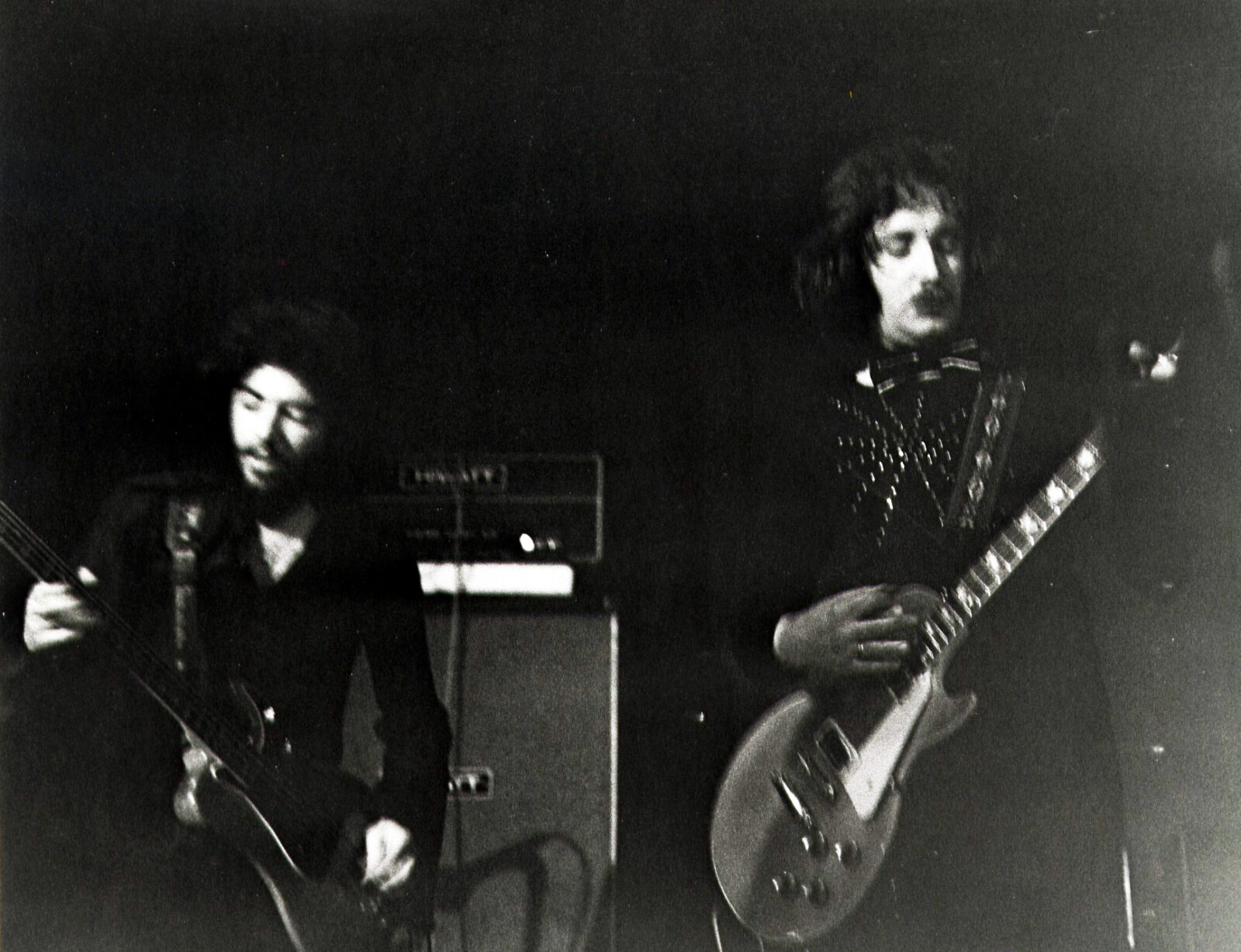
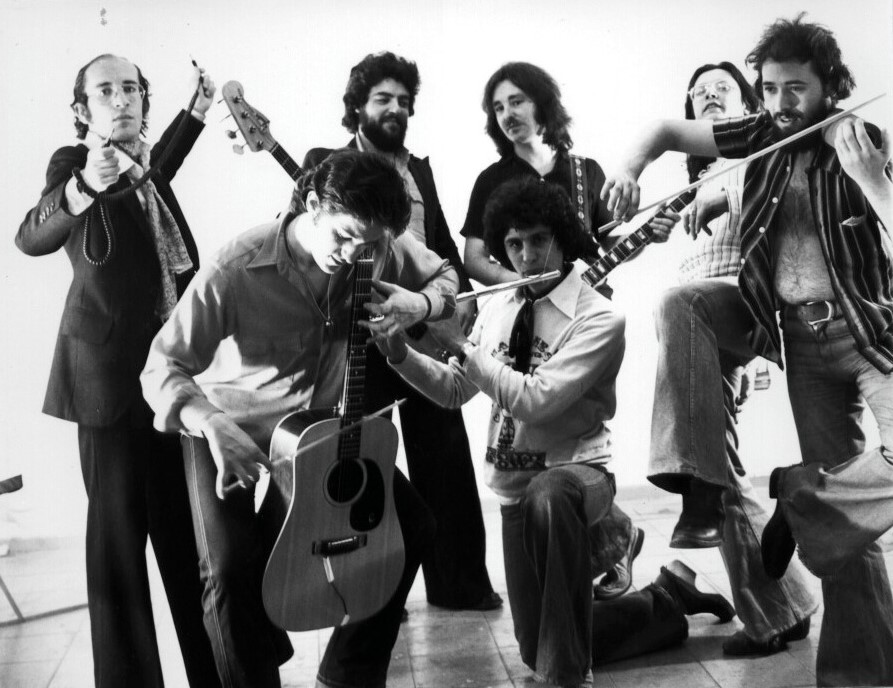
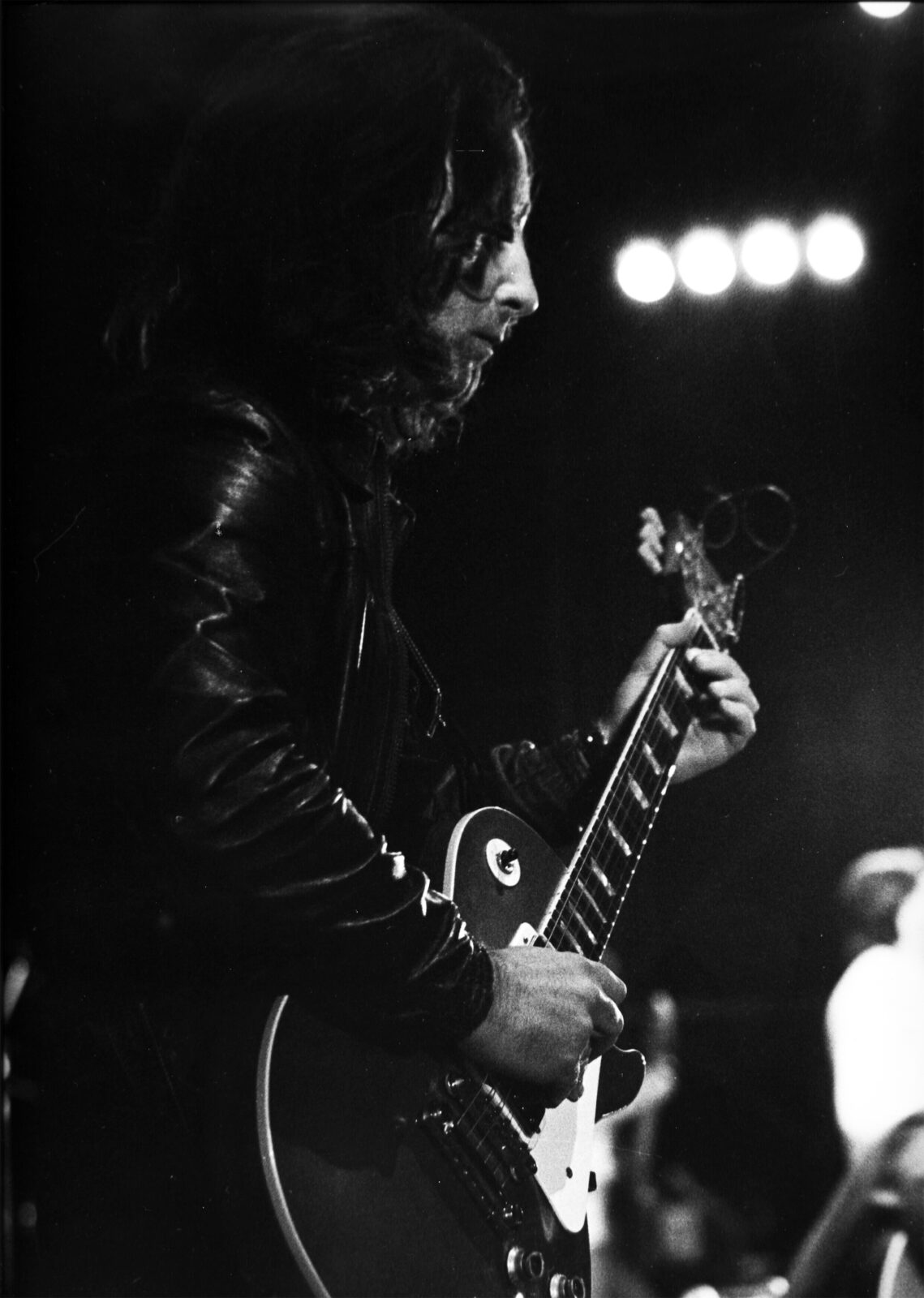
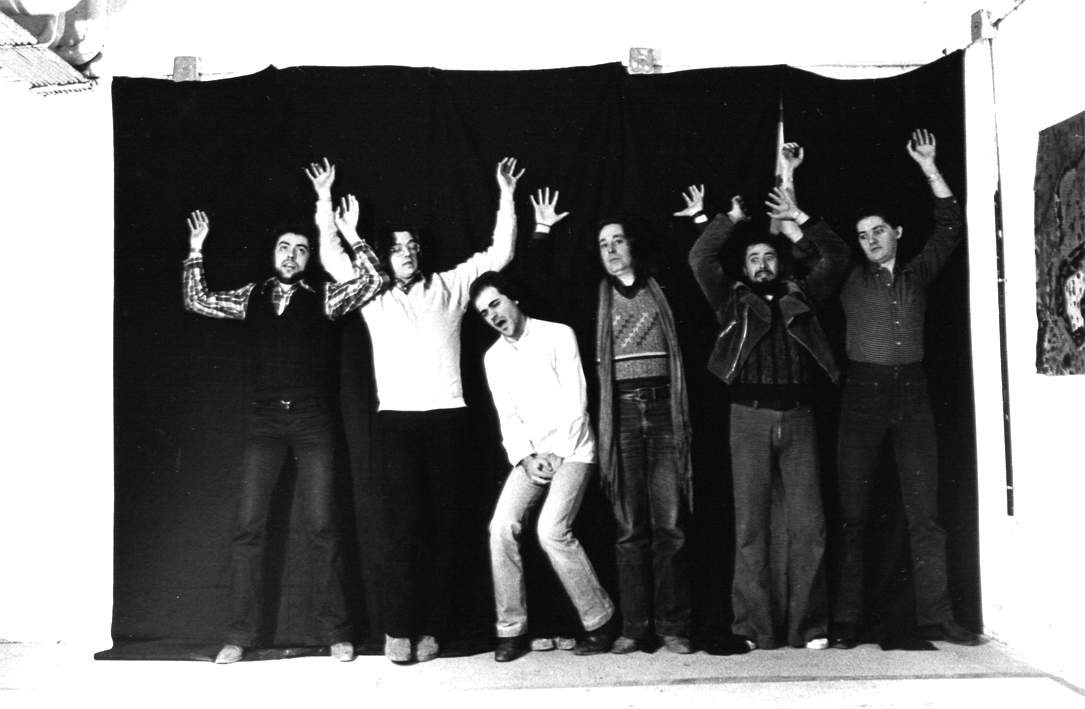
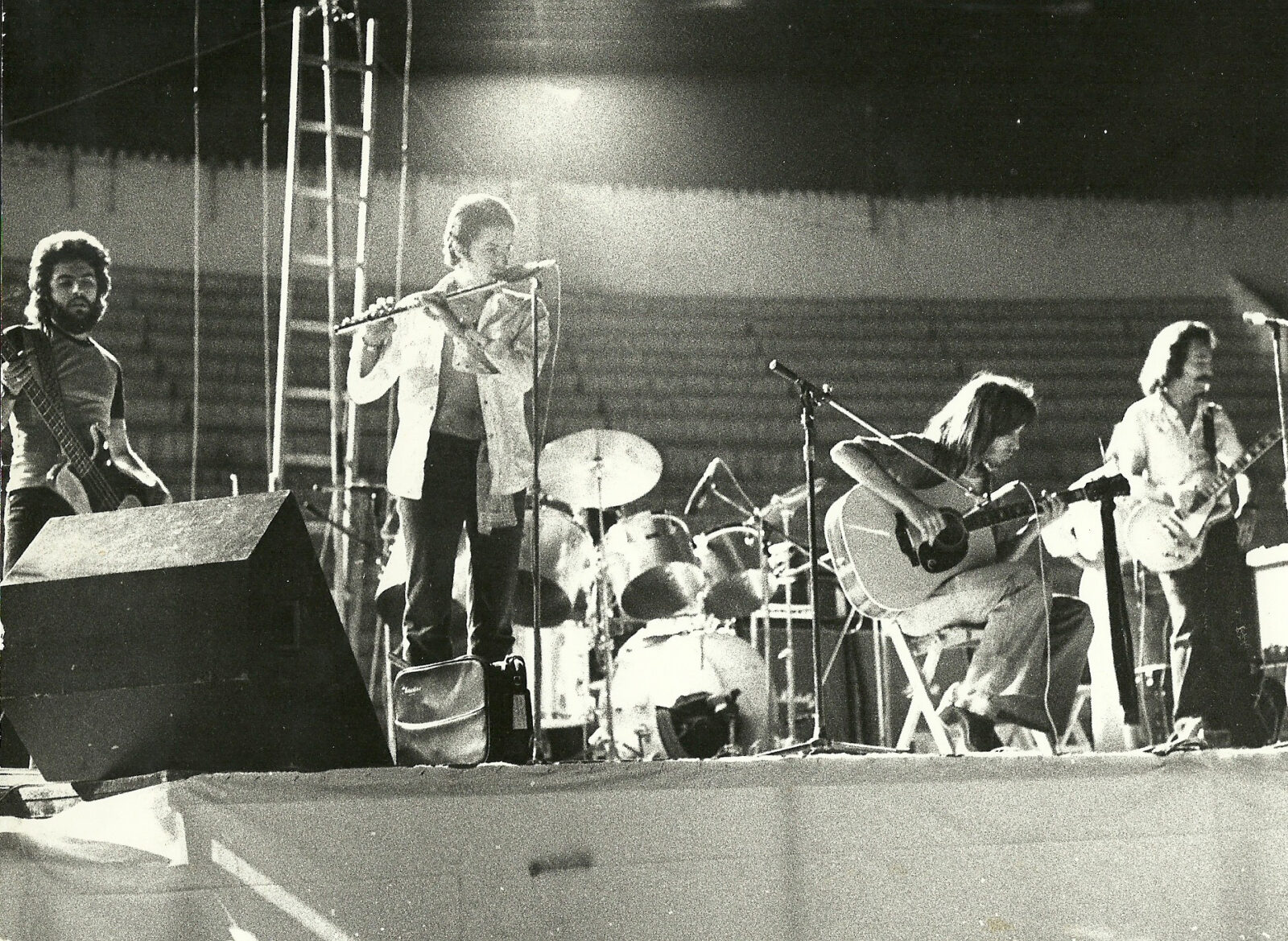
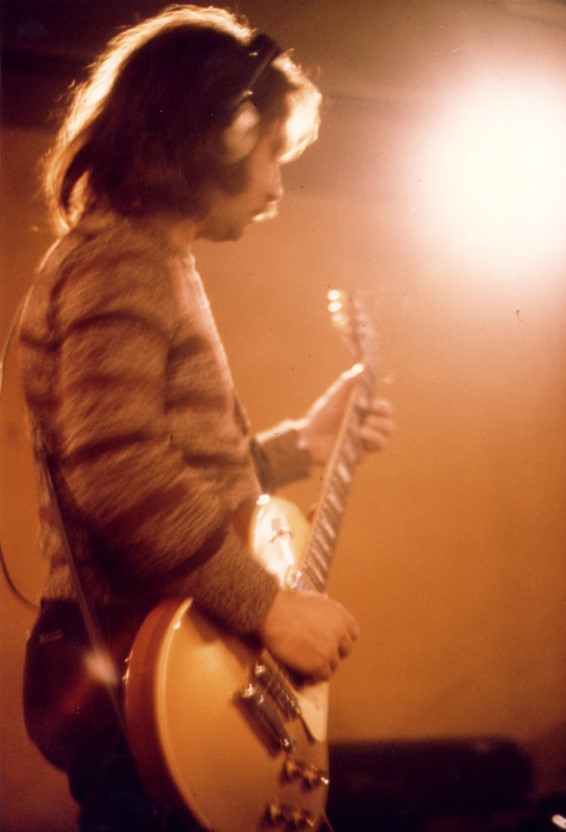
Was there a certain concept behind it?
The search, something so simple and complicated at the same time. I’ve always tried no to be mimetic, and even with the guitar I haven’t wanted to be too influenced by other guitarists, I think you have to have your own personality and try to contribute, even if you don’t always achieve it. I like to listen to everyone and know what they are doing, to later try to take a different path.
You moved from the wild / raw sound of your youth to some highly interesting fusion and experimentation. What are some of the most important players that influenced your own style and what in particular did they employ in their playing that you liked?
Well, this thing about influences has always been a bit complicated for me to answer. I have always had the intention of fleeing from mimicry and great influences, but inevitably we all unconsciously receive the influences of everything that is heard and especially of all the music that we like, as I have already mentioned I have been and am very eclectic and not fanatical follower of any particular style. Another thing is the guitarists that I have liked to listen to and that subconsciously have left me some musical residue, for example at the time of Cerebrum I came to really like Henry Vestine who was the guitarist of Canned Heat, but then came the expressionism of Hendrix, the magnificent simplicity of Clapton. I have listened with some attention to Lukather, Robben Ford, Larry Carlton, Michael Landau, et cetera. In any case, I think that my way of playing at many times is close to blues rock, although incorporating many nuances of other styles; which I think translates to not being too conventional.
How did ETC, which evolved in ‘Metrópoli’ come about?
ETC was a hard rock project with certain symphonic atmospheres, with totally original music and that, in my opinion, achieved a high-quality repertoire. It was a quintet; drums (Enrique Ballesteros), bass (Pedro Terán), keyboards (J.C. Rodríguez “Snoopy”), guitar and voice (Valentin del Moral). Its members except for the bass player are still active today. ETC in no case was a prelude to Metropoli.
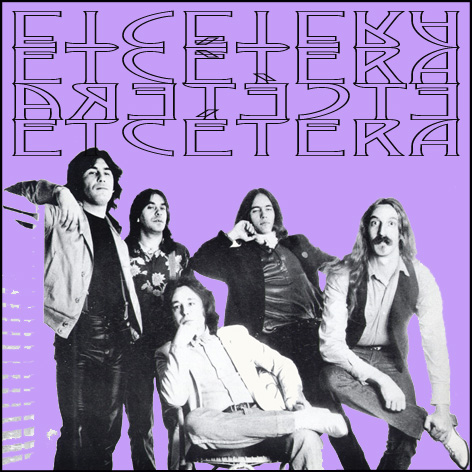
Metropolis was a completely different project, along the lines of what the record company called the AOR style. [Adult Oriented Rock]
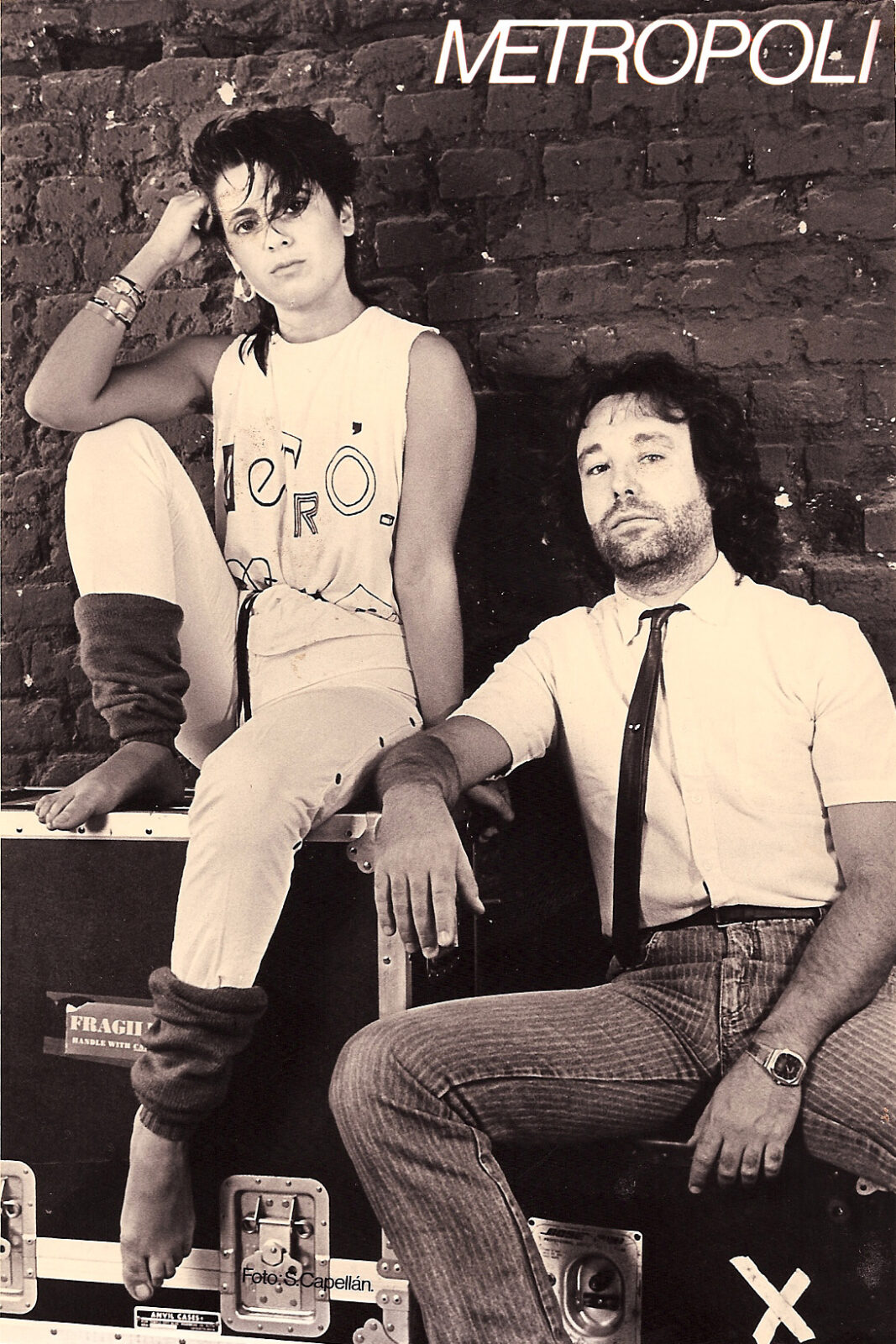
You recorded several singles and two albums with Metrópoli,
Indeed, with Metrópoli, two LP’s and between 4 or 6 singles (I don’t remember very well), although as in any project there was always a song left to be published, especially material that was going to be part of a third album, but despite the fact that Metrópoli ranked for several months in the Spanish sales charts with his first LP. ‘Sin Tregua’ and that appeared in many television programs, et cetera. The Fonomusic record company did not dedicate neither money nor enough interest to the project, (they were clumsy), so in the end we decided to cut the relationship with them and not continue recording.
When did you become a producer? What are a few key lessons you’ve learned about producing that other producers could take advice from?
I gradually joined the path of production, from the beginning I observed that in most cases, perhaps because of the style of music with which they worked, the producer served little more than to tell us that time passed very quickly in the studio and that it cost a lot of money, so in the strictly musical area we ended up doing the work ourselves. On the other hand, since the beginning of the 70’s I began to be interested in sound and the treatment of audio in particular; how a project was put on foot, how it was given shape and how all that ended up being captured on a record. Like Alan Parsons, I thought that in order to know how to drive and “give birth” to a record, you had to know the material you were working with; the ideal was to know about sound and be a musician to produce, which led me to train as a sound technician, so in parallel I set up a sound company in 1975 called Delta T.E.S. which lasted until 1987 and in which I worked as a sound technician F.O.H. (sound engineering as the English say) with many famous international artists such as Rick Wakeman, Isaac Hayes, Ray Charles, Gloria Gaynor, and Tina Turner. Later I was hired by S.G.A.E. (General Society of Authors and Publishers of Spain) as a producer, so between one thing and another, to date I have made around 170 productions. The best tips in my opinion would be; know what the goal or “target” of the production to be carried out is, talk to the artist who is going to record and/or has composed the songs to find out what he wants to capture on the album, from here analyze what it is that you can contribute as a producer, and finally, guide and know how to convey to all the musicians who are going to record all those ideas in a clear and concise way, on the other hand, a good producer must have heard the best productions on the market and have a rough idea of how they are put into practice.
You are still very active and also have Delirium Blues Fusion band… how did that come along? You have three albums out. Are you planning to record a new album in the near future?
Yes I certainly try to be active, I imagine that if I stopped being active I would be very bored. In the first place, Delirium emerged as a reaction to the disagreement with the Metrópoli record company, with a “back to the roots” spirit, playing arrangements on songs that I always liked and without wanting to know anything about recordings or record companies, I just wanted to play, made a disc extracted from recordings made in our rehearsal room.
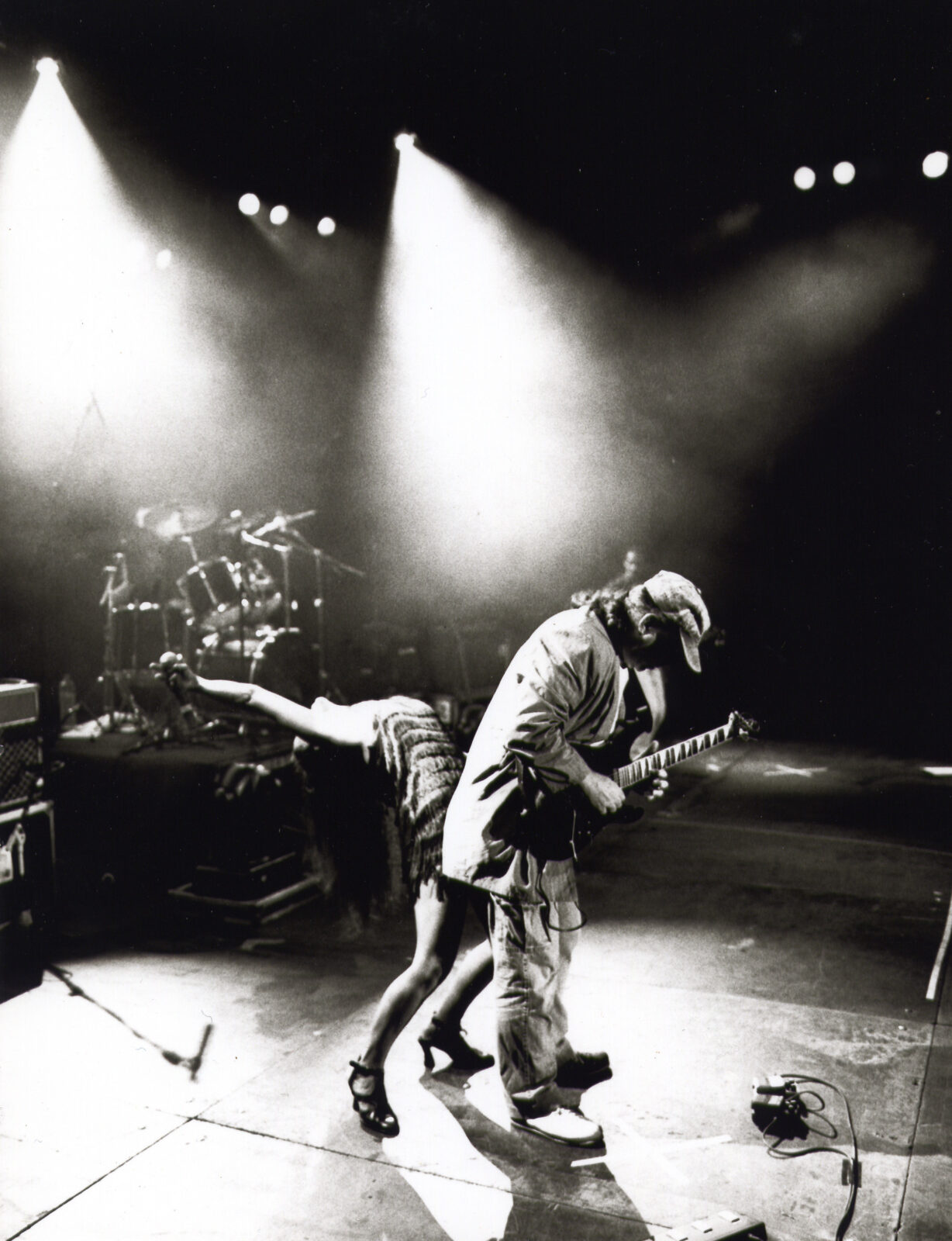
Over time and after several changes of musicians, Delirium Blues Fusion arrived, already in the studio the second album was a small advance that gave way to the third album, which was a production accompanied by videos, all of them were my own productions and published by my own labels. Record companies: LOA (La Oreja Atenta) and Producciones Inesperadas.
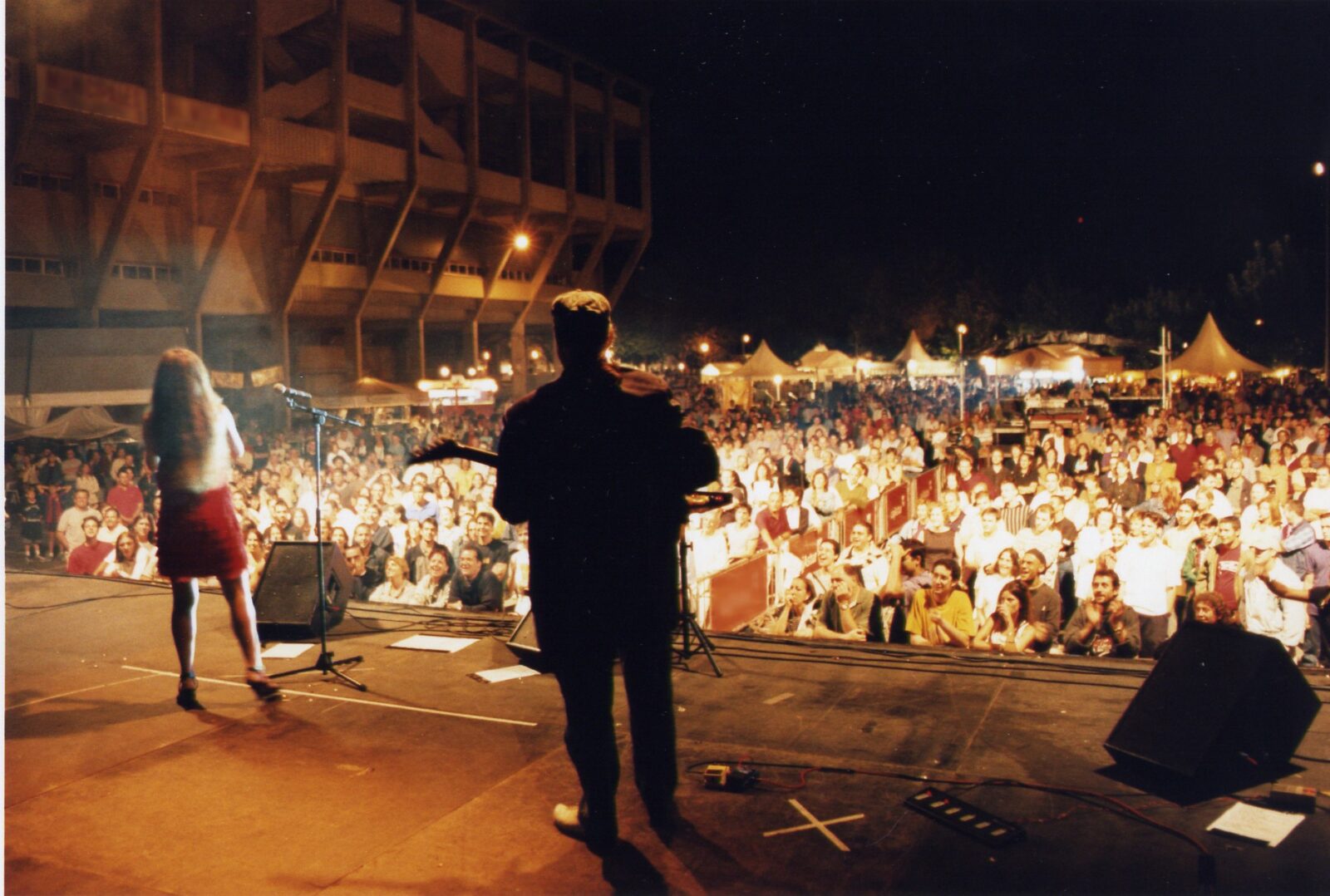
Indeed today, I am working on a solo album that will be a chronological tour of songs composed by me from the time of Cerebrum to today, most of the songs are unreleased, since for one reason or another they were not published, there will be also a couple of versions (one by Cerebrum and another by Araxes and/or Metrópoli) but with different arrangements and some newly composed songs. One of the particularities of the album will be that many of the musicians who have played with me over the years will participate as guest artists. It’s an album that gives me and will give me a lot of work and it will take me a long time to finish it, but I’m not in too much of a hurry either. For now I already have the title of the album: ‘El Hijo del Peluquero’, since my father was a hairdresser.
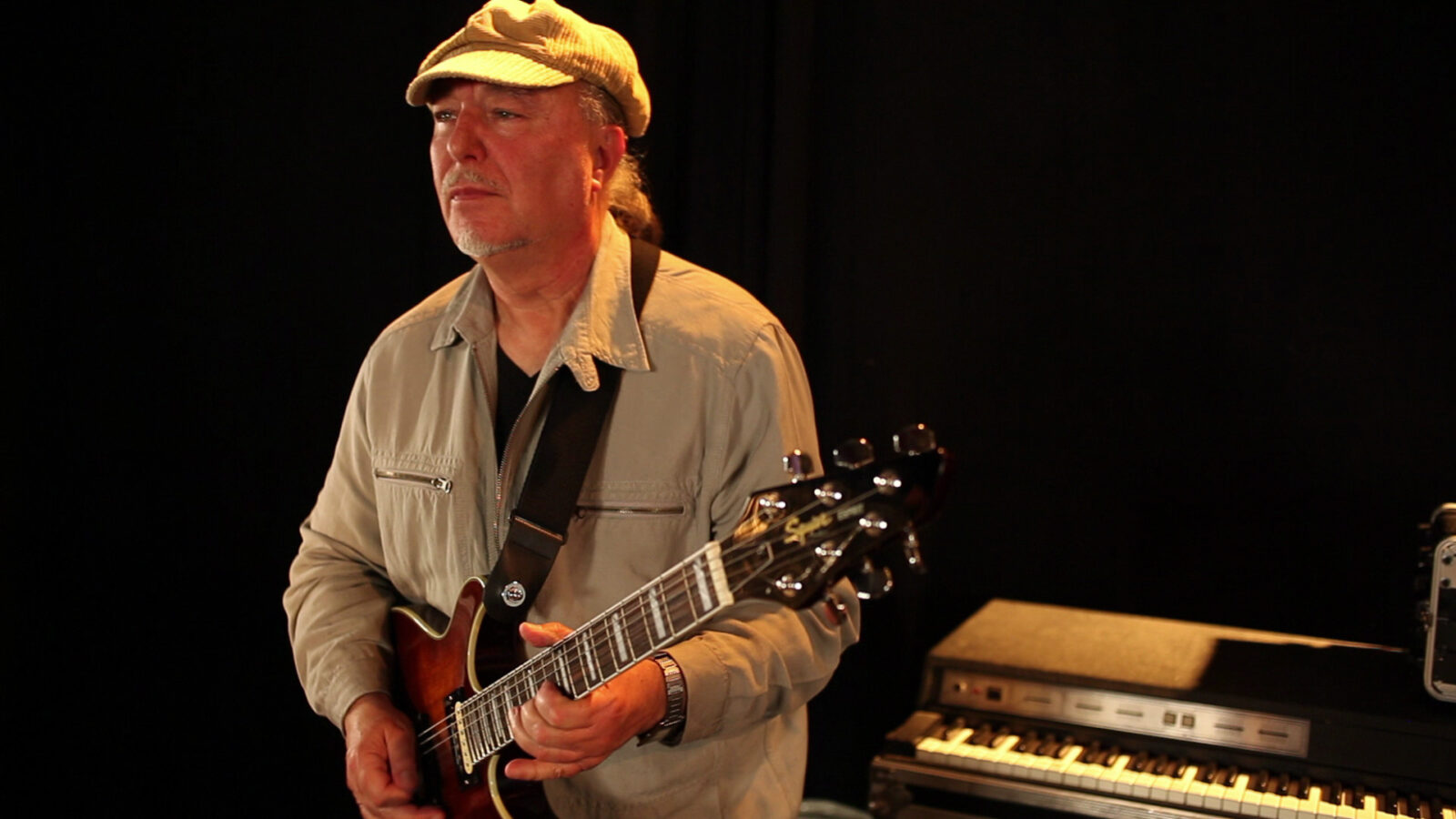
Looking back, what was the highlight of your time in the band? Which songs are you most proud of? Where and when was your most memorable gig?
Actually that is very difficult to answer, after so long there has not been a single highlight, most memorable concert or favorite songs. Right now I wouldn’t know how to answer you.
How do you feel about the fact that Cerebrum recorded some of the heaviest music?
I don’t know if Cerebrum has been able to be part of the heaviest music in history, but what I do feel is that with Cerebrum it was possible to contribute something different, musically speaking, in a few years when, at an international level, nobody expected that a Spanish group could do it. In fact, an article that the American magazine “Record World” dedicated to us was entitled: “Cerebrum, Surprise in Spain!!”.
Is there still any unreleased material by any of your groups or projects that you would like to see released?
Well, as I told you before, I’ve started working on an album that will take you chronologically from 1970 to today, and in which most of the songs have never been released.
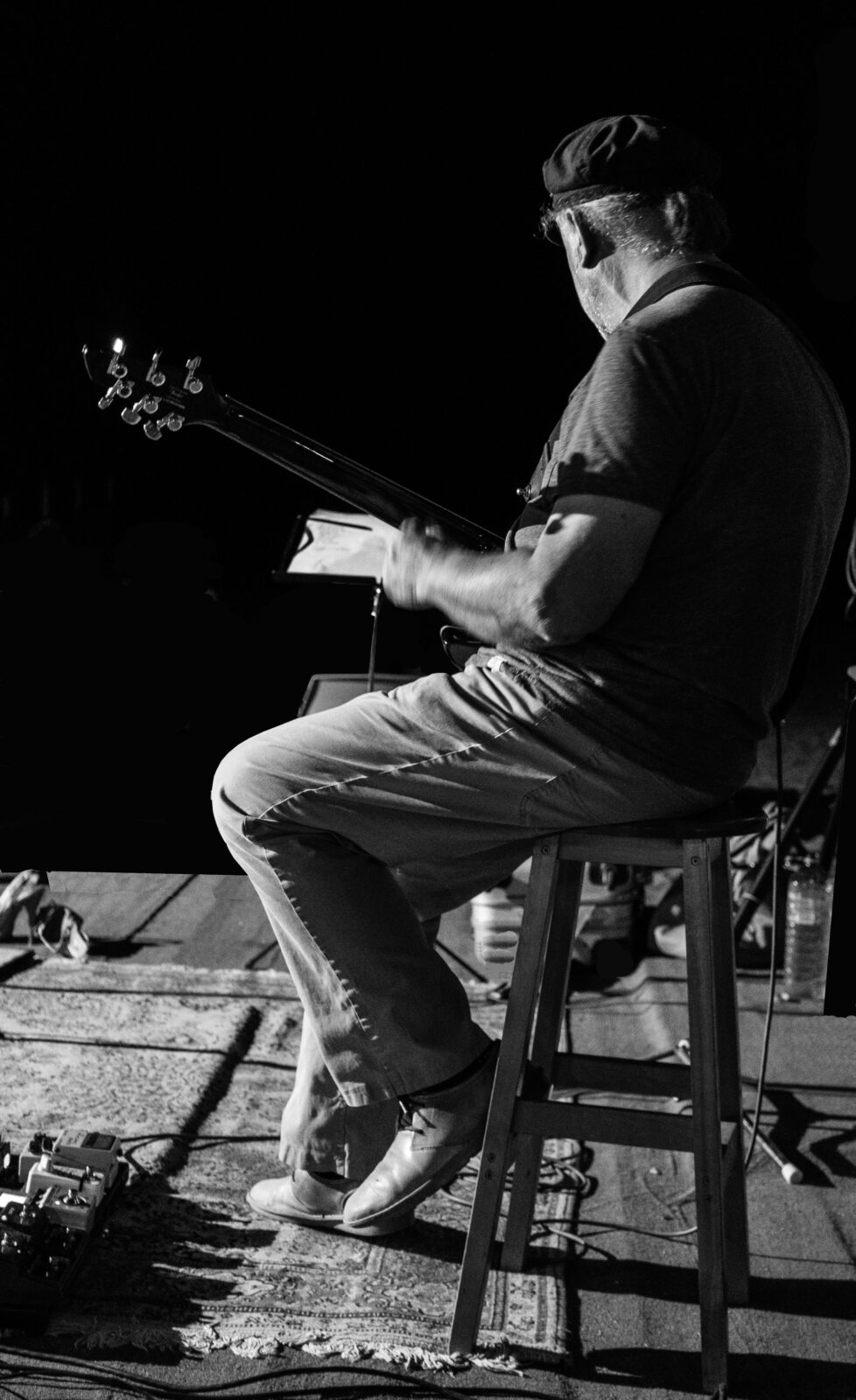
Thank you for taking your time. Last word is yours.
Thank you for your interest.
Klemen Breznikar
Headline photo: Cerebrum in 1970
Javier Esteve Official Website / Facebook
Delirium Blues Fusion Official Website
Javier Esteve Photography Official Website

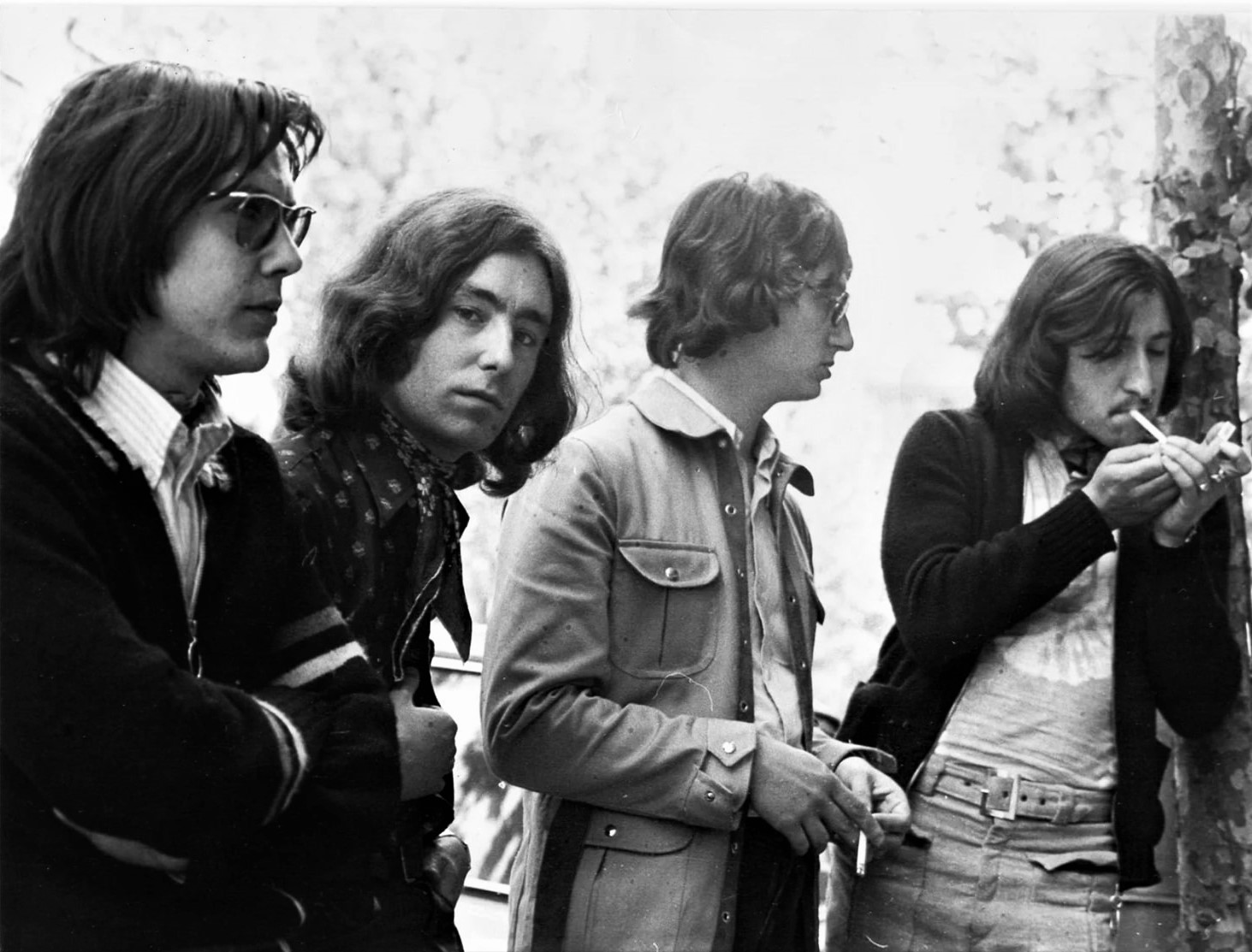


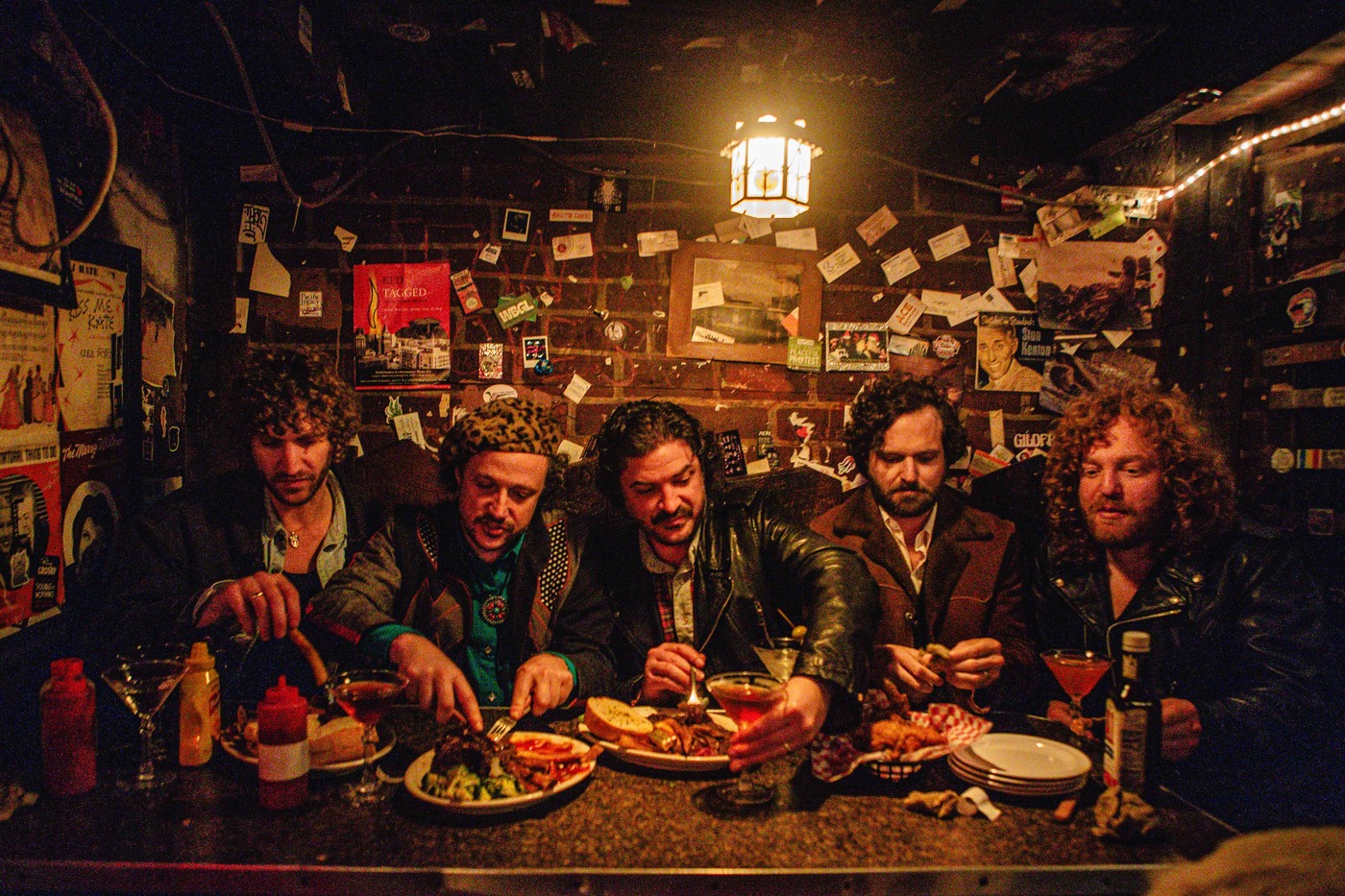
Thank you Klemen for this very good and detailed interview. Of course i have The Cerebrum on a cd. Thanks also for the many unknown photos.
Great post, 100% interesting.
My father is Luis Balduque, a member of Los Surcos.
Thanks and happy afternoon!